A father who transformed a 15ft underground nuclear bunker into a ‘quirky’ space is putting it on sale for as little as £15,000 as WWWIII fears grow in Europe and the Middle East.
The fallout shelter was once used to monitor for radioactive explosions across Britain but Vladimir Putin lowering the threshold for justifying a nuclear launch this morning has instilled fear that bunkers like it could be back in action.
It now contains beds, space for record music, and operates as a convenient get-away from the ‘noise outside’.
Jon Graves, 37, is the mastermind behind the ex-Royal Observer Corps pit’s makeover which he says he had ‘lots of fun’ doing at its site in Pontefract, West Yorkshire.
The businessman and father of three has now decided to put the structure up for auction as he makes plans to emigrate to Dubai with his family in the new year.
But he will leave the bunker behind after Vladimir Putin this morning signed off on an updated version of the Kremlin’s nuclear doctrine that broadens the scope for Moscow to turn to its fearsome atomic arsenal.
The new document, which replaces the previous iteration outlined in 2020, allows Putin’s strategic forces to deploy their devastating weapons if Russia or Belarus is threatened by a non-nuclear nation supported by a nuclear power.
Threats that could warrant a nuclear response from Russia’s leadership include an attack with conventional missiles, drones or other aircraft, according to the updated document.
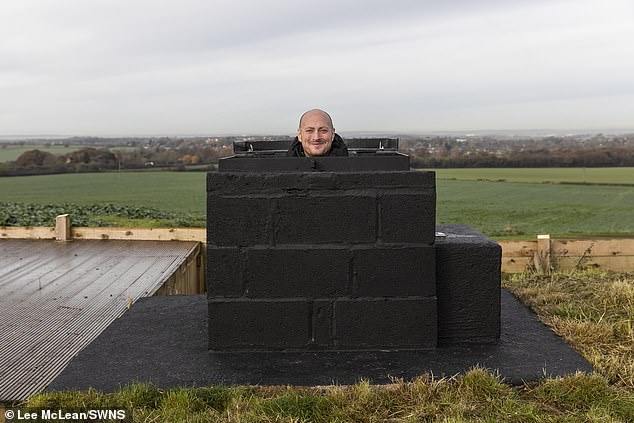
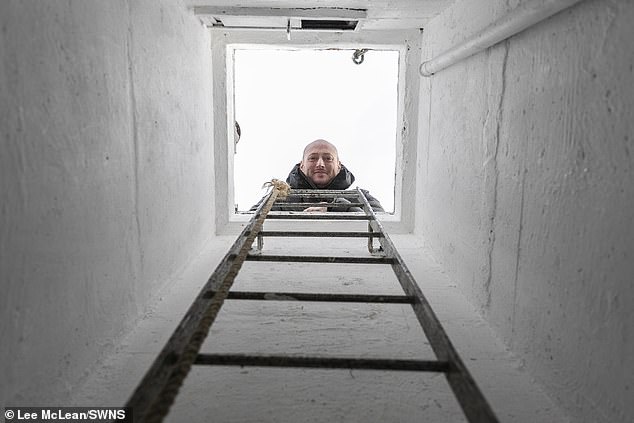
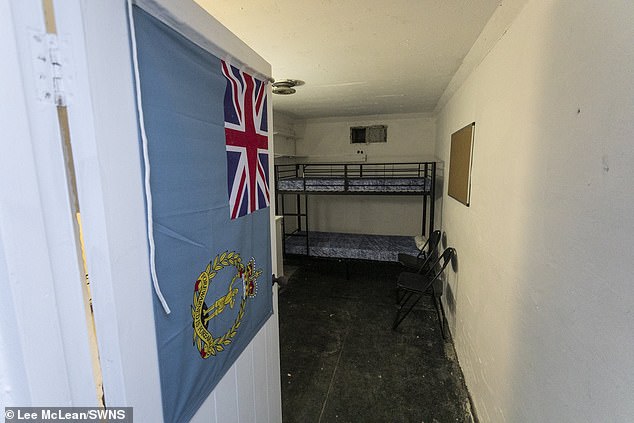
Speaking more lightheartedly on the shelter, Mr Graves said: ‘It was never about modernizing it. It was always about trying to get it back to a usable condition, similar to what it was historically.
‘I didn’t want to put TVs in it. I didn’t want to put loads of tech in there, it was very much about “Can we get it so it is a quiet space away from noise”?
‘It’s such a quirky, great building and we used it loads last year, we had lots of fun.
‘For it to just sit and rot away and get cold and damp and overgrown just feels like a waste.’
The fallout shelter – which was manned by observers from 1964 to 1991 – was capped off with concrete when Mr Graves bought it three years ago.
But on finally breaking into it, he discovered that the underground military-grade hide-out had remained remarkably intact.
The multiple-business-owner said he had always loved the idea of having one of the 1,500 observation bunkers dotted throughout the country.
So when the pit came up for sale close to his home the military aficionado jumped at the chance to buy it.
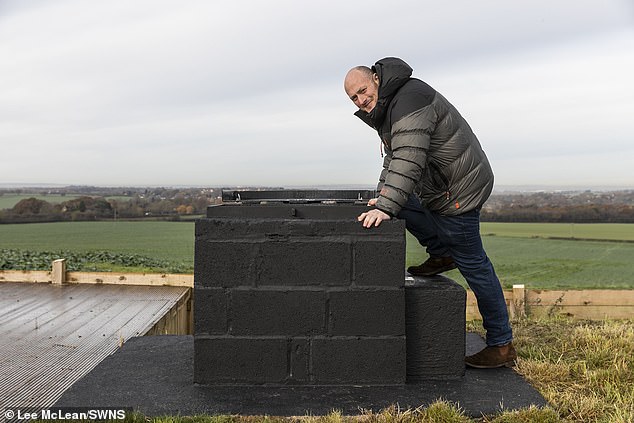

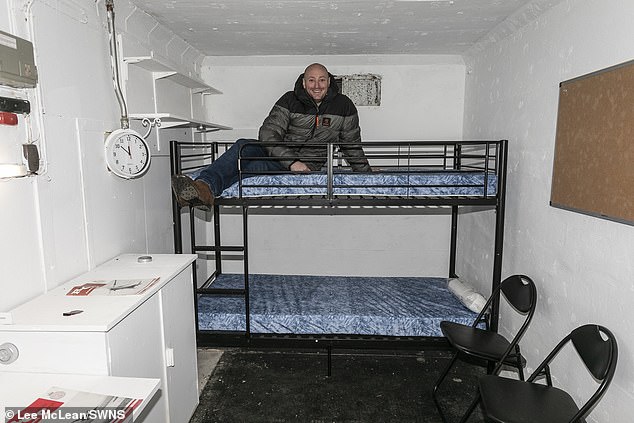
He originally built some decking so he could camp with his wife and kids on the remote 40ft by 50ft plot surrounding the cavern but was stunned when he finally chiselled through the concrete crust over the bunker’s lid to find it was watertight and in relatively good condition inside.
He said: ‘I’d always wanted to own one, but every time I saw one come up, they were all down south, miles away from home.
‘We’d never been in it. We took a punt really that it was going to be ok. The top of it was in a reasonable condition – all be it with the cap on top.
‘And when we first opened it, it was bone dry inside, which was great. Then of course we could get on with decorating and renovating it.’
He added that if a nuclear weapon exploded somewhere in Britain, it was assumed that standard communication lines would be heavily disrupted.
The speculation comes as Putin said he would consider Western nations ‘direct participants’ in the war in Ukraine if they were to provide Kyiv with the ability to strike targets inside Russia.
He also suggested he may provide Russian missiles to Western adversaries to strike Western targets abroad as a course of retaliation.
Meanwhile observers in the West Yorkshire bunker would have been tasked with looking out for light emanating from the bomb or recording nuclear fallout with instruments.
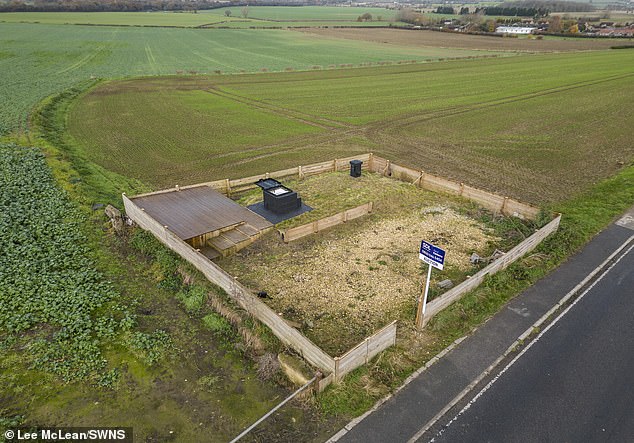



It is believed that the bunker, known as Upton ROC, detected radioactive material that spread from the Chernobyl nuclear powerplant disaster in Ukraine in 1986.
The shelter represents a bit of British Cold War history which was discussed as Mr Graves appeared on the Channel 4 show George Clarke’s Amazing Spaces while he restored the bunker with fittings in keeping with its previous usage.
It’s believed that the bunker, known as Upton ROC, detected radioactive material that spread from the Chernobyl nuclear powerplant disaster in Ukraine in 1986.
And Mr Graves deliberately chose to renovate the subterranean structure with items harking back to the period when it was in use.
He said: ‘We tried to keep it in the same format, the same layout that was there originally, and I think we did that reasonably well.
‘We ripped off all the old polystyrene tiles and cleaned it up, got rid of all the dead mice that were stuck in it, and just kind of decorated it.
‘We furnished it and put back in what was already there. So we didn’t put brand new modern beds in, we put old metal beds back in.
‘It was always about trying to tastefully restore it to a condition that you could stay and sleep in without the noise from outside.’
He added the bunker would have been stacked with provisions so occupants could survive for two weeks underground in the advent of a nuclear explosion.
But he said since Donald Trump’s victory in the US presidential election, the number of hopeful buyers citing fears over future world wars had in fact decreased.
He joked: ‘You would think it would be the other way around.
‘But it’s definitely topical with the way American politics is at the moment and with Russia and Ukraine fighting.
‘It wouldn’t survive a direct hit, that’s for sure, but from a novel perspective, it’s definitely interesting.’
The bunker has a guide price of between £15,000 and £20,000.
And Mr Graves said the freehold property was not listed, meaning future buyers could redesign it as they wished after obtaining planning permission.
He went on: ‘It’s certainly big enough to record music in it.
‘If you live locally, you could just probably go and chill out in it. It’s a big enough space that you could go down.’
The bunker will go under the hammer at SDL Property Auctions on November 21, with the bidding process livestreamed on its website.
Andrew Parker, auctioneer and partner at the firm, said: ‘There are only a handful of ROC nuclear bunkers left in the country so to have this lot for sale in our auction is quite unusual.
‘This is only the fourth time we have had a bunker for sale, and the previous three that we have sold generated a lot of interest, and we’re confident this lot will do the same.
‘Some of the interested parties are simply curious to see what the inside of a nuclear bunker looks like, however, many are genuinely considering purchasing to secure their own piece of history.’
